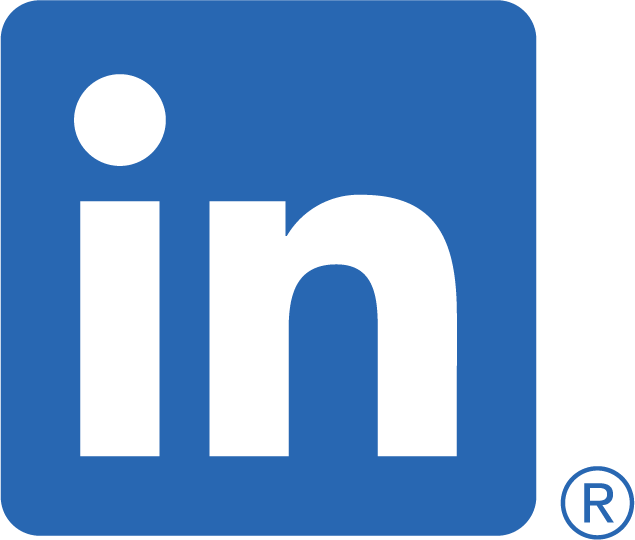Short answer: you don’t!
That’s right, the objective — that classic resume feature — actually doesn’t tell the recruiter much valuable information. And since your resume should never be more than two pages (one if you’re fewer than 10 years into your career), you don’t want to waste space on an objective when a professional summary is much more effective.
In this article, we’ll go over why you should replace your objective with a professional summary and how to write the best one for the job you’re after.
Let’s get into it.
Why a professional summary is better than an objective
An objective is a two-to-three sentence sales pitch that tells the recruiter who you are as a professional and announces why you’re applying for the job. Since resumes get only 7.4 seconds of the recruiter's attention on average, you want to make the most of them.
A professional summary is 12-16 phrases, conveyed in no more than four lines. It briefly and effectively shows your four audiences — screener, recruiter, future boss, and applicant tracking system (ATS) — who you are as a candidate, where you plan to go professionally today, and where your career is headed.

A professional summary is better than an “objective” because it:
-
Delivers a meaningful message about your professional goals.
-
Provides actual information to two of your main audiences: the recruiter and your future boss.
-
Is designed and formatted to stand out from the rest of the resume content.
-
Packs a lot of info in a short, compact form.
It’s simply a lot more dramatic and compelling than a generic line or two that recruiters have read probably thousands of times. While the most effective resumes have a simple and “boring” format, you can’t afford to be generic in what you write.
If your resume doesn’t stand out, it will be ignored by recruiters. And if it doesn’t include the right keywords, automated resume parsers may not index it correctly. This means recruiters are less likely to see it when they run a search for the position you’re applying for.
Your professional summary is a great place to add essential keywords in a natural, organic way.
How to write a professional summary
It may take up only 10% of the space on your resume, but your professional summary is arguably the most important part. Spend at least a third of the total writing time perfecting your professional summary and professional headline.
Here’s how to write a professional summary that catches the attention of your four audiences and effectively conveys who you are as a professional.
1. Start with a professional headline
Your professional headline acts as the heading for your professional summary. It’s three or four words that include an eye-catching adjective and convey where you are currently in your career.

As you can see above, the word “strategic” shows how you approach the job of “marketing analyst.” Sure, the actual job responsibilities for the position you’re applying for may be a standard for all marketing analysts, but the word “strategic” indicates that you are driven by strategic thinking rather than, say, being detail-oriented or creative.
However, being detail-oriented or creative may be preferred by different organizations. So it’s a good idea to spend some time on the company website and searching for recent headlines in the news regarding the company to get an idea of their unique mission, style, and culture.
The headline and summary should be centered, not left aligned, and the headline should be in bold and ALL CAPS. This will make it more visible to human audiences and help it stand out to resume parsers. However, don’t add spaces between the letters for aesthetic effect, as this will confuse parsers and the ATS.
2. List your future job titles
After your professional headline, the first line of your professional summary lists examples of job titles you would accept at your next job.
Most field and corporate positions today have multiple branching jobs associated with them, so use those for inspiration. There also may be alternate versions of titles for the same job, like Sr. Marketing Analyst and Lead Marketing Analyst. Include these so you cover all angles, because you never know the exact keywords the recruiter will use to search for resumes.

Listing the exact titles you’re looking for makes it easier for the:
-
Resume screener to index your resume.
-
Recruiter to find and shortlist you as a candidate.
-
Future boss to better understand you and your career path.
-
ATS to associate your candidacy with the right titles.
However, the titles you list must be a plausible next step in your career. Your immediate professional ambitions need to make sense in the context of your job history, especially your current or most recent job.
When listing your next job titles, consider the work that would be involved in the position as well as the company size and scope. If you’re in a higher position but in a smaller company, you’re more likely to get hired for a similar or higher position in a company of similar size. If you can show quantifiable success in your current role, your chances of getting hired at the next rung up the ladder improve.
However, if you’re a high-ranking employee or in a leadership role at a smaller employer, it may be an uphill climb to achieve a position at the next level at a significantly larger company.
If you’re in an entry or mid-level position today, you should calibrate your expectations when reaching for higher positions, even at companies of similar size. Don’t be discouraged from seeking career advancement, but consider many steps you may be trying to skip — and how likely recruiters and hiring managers would be to take you seriously as a candidate.
For example, if you were a senior marketing analyst at a startup, you could reasonably expect to be considered for a VP of Marketing or even Chief Marketing Officer position at another startup. However, it’s less likely you would be considered for these roles at a Fortune 500 company if you’ve only worked at small to medium-sized enterprises.
Additionally, make sure to use clean and tasteful separators between the job titles. The example above uses dots but you can also use bars, hyphens, or asterisks.
3. Detail your professional skills
In the second line of your professional summary, list your most important professional skills in relation to the job you’re applying for. You’ll back these up with proof later in the bullet points of your work history section, but here you need to make them distinct and aligned with the job titles you’ve mentioned in the summary.

Remember that the skills you use at your current job are important, but not as important as the ones you’re developing and will use in the future. What’s new and challenging for you today will likely be part of your everyday responsibilities at the next level in your career. And in your new job, you’ll be reaching for new skills and abilities you may have no experience with yet.
If you aim to advance in your career, the skills that earned you the professional achievements you’ve made so far will be the baseline skills needed at your next job. Focus on highlighting the skills you’re still working to develop, and leave off basic things that your future employer will find obvious.
For example, if you’re applying for an editorial position at a magazine, there’s no need to list that you have typing skills. If you’re applying for a job as a Senior Administrative Assistant, it probably isn’t necessary to mention that you have phone skills.
No matter the job you’re applying for, you want your resume to show that your previous work and educational history have given you all the skills necessary to accomplish the central tasks of your next job — not that you’ve been a cog in a bigger framework and may not be ready for advancement.
If you’ve contributed individually rather than as a team, highlight skills that show you as a leader or manager. Someone who has the ability to accomplish things autonomously.
Space on your resume is an extremely rare, valuable resource — especially in your professional summary. Carefully consider each word before you add it.
4. List your achievements
In the third line of your professional summary, write three to five phrases that show how you’ve demonstrated success in the past. These can be achievements or attributes that you’ll elaborate on later. Only mention areas where you’ve excelled, and list them in the context of your preferred job titles.

There are two types of achievements and attributes that are appropriate here:
-
Those that have earned you recognition in the professional world.
-
Those that show how you possess mastery over the responsibilities associated with previous roles.
There’s no need to include numerical values to quantify your successes here, as you’ll be going into greater detail in your work history section. Here, your achievements and attributes should point to how you achieved the highest scores of your career, rather than saying what those exact scores were.
For example, “led strategic analysis,” “oversaw award-winning campaigns,” and “improved worldwide service delivery” would be great achievements to include here. Notice there are no details yet about the results of that strategic analysis, or the revenue driven by those campaigns, or how much worldwide service delivery improved. That’s information you’ll include in the bullet points with the rest of your work experience.
Again, make sure the achievements and attributes you list on the third line of your professional summary show that you’re a highly qualified candidate for the position you’re applying for. Keep in mind that you’ll likely be asked about these if you’re invited to an interview, so prepare to explain each achievement in detail.
5. (Optional) Add skills, capabilities, and achievements
If you choose to add a fourth line, this is where you add some additional color to round out your professional summary nicely. It’s a space for you to mention noteworthy awards or accomplishments that make you a better, more valuable candidate overall.

Here, you can mention any situational considerations or achievements that could help you progress within the company.
These could include:
-
Internal or external awards and recognition from company leadership or third parties.
-
Details that point to exemplary job performance, like early promotions, expanded responsibilities, or other accolades from your company.
-
Qualities that led to success in previous positions, like public speaking ability.
These items don’t have to be directly related to the job you want. They can point to your value as an employee in general. It’s good to show your future boss that you’ve been recognized for your work by previous bosses.
Professional summary best practices
Your professional summary is your strongest pitch for you as a candidate. Here are some best practices to follow so you can craft a resume that maximizes your professional chances.
1. No more than 4 lines
Your professional summary should be three or four lines in total. Remember, space on your resume is a valuable commodity, so constrain the skills, achievements, and everything else you want to include to these four lines. And never bump something that should be on one line down to the next. For example, one of your next job titles shouldn’t be on the second line. If this happens, think of ways to shorten your phrases or delete some if necessary.
2. Use 3 to 5 short phrases on each line
Shorter, more precise phrases have a stronger impact on the reader. You want to make it clear to recruiters and your future employer that you know what you want and you’re decisive about it. One to five words should suffice in almost all circumstances.
3. Use proper formatting
Your professional summary, along with your professional headline, should be center aligned. This helps it stand out from the rest of your resume. Use bullets, dashes, or bars to divide each phrase. Abbreviating job titles is fine to save space. Don’t let a word from a line drop to the next. Make sure everything is clean and uniform.
4. Do not lie
It can be tempting to embellish your previous roles and achievements. Don’t do it, either in your professional summary or anywhere on your resume. While you may think you can get away with fibbing about an award you won, an accomplishment you achieved, a skill you’ve developed, or an academic certification you earned — these can all come up in your interview or, worse, after you’ve accepted the job.
You don’t want to get caught red-faced and miss an opportunity to advance your career. You may be blacklisted from your dream company, or you could even face legal ramifications if you become an employee and HR discovers your dishonesty.
Final Thoughts
Your resume is designed to convince your four audiences that you’re a leading candidate for the job you want, and your professional summary is its backbone. It distills all your skills, capabilities, past achievements, future ambitions, and even a little of your personality into a short, easy-to-read collection of phrases.
More than just a declaration of your current skills and intentions, your resume should show the progression of your professional development. It should point to where your career is going.
Make sure everything in your professional summary is something you can discuss in a positive way. You don’t want to put yourself in a situation in an interview where you’re on defense and having to think of explanations on the spot.
Your professional summary and headline are your primary sales pitch, so craft it in a way that makes a great case for you as a candidate.
Following these instructions and best practices will help ensure your resume represents you effectively.
Ready to create your own winning resume? We can help. Get started today!







